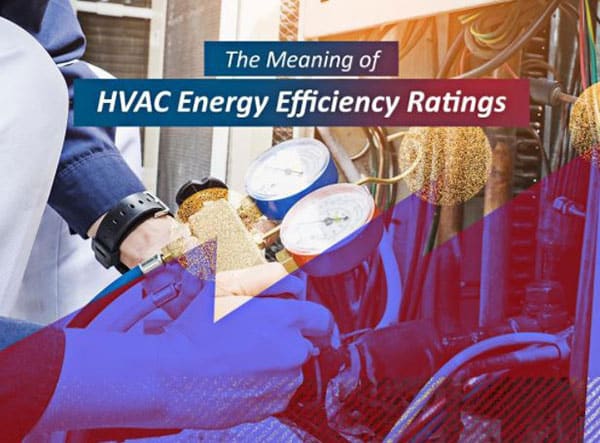The Meaning of HVAC Energy Efficiency Ratings
When buying new heating and air conditioning systems, you have to consider certain factors. The main thing to consider is the system’s energy efficiency ratings. Scoping out a service unit’s SEER or EER numbers can help determine if a system can satisfy your air conditioning needs. Here’s a look at the meaning behind the energy efficiency ratings of HVAC systems.

SEER
The Seasonal Energy Efficiency Ratio measures the quota between the cooling capacity and the power input of HVAC systems and averaging it over a full season. The higher the rating, the more efficient the system; the lower it is, the lower the amount of energy efficiency. By the EPA’s standards, air conditioning units manufactured after January, 2015 are required to have a rating of at least 14 SEER. Prior to that, the minimum was 13.
EER
Energy Efficiency Ratio, on the other hand, compares the cooling capacity of a unit with its power input. Testing for EER requires higher operating temperatures ranging from 95 degrees Fahrenheit or higher. This rating factors in humidity removal as it shows how air conditioning units perform under stress due to maximum cooling loads.
Note that high SEER ratings don’t necessarily translate to high EER ratings as well. To get the best air conditioning system, you’ll have to take both ratings into consideration.
EER or SEER
When you compare both rating systems, the EER is more of a measure of the HVAC unit’s capabilities while SEER measures its efficiency over the entire course of a season. As such, HVAC experts tend to agree that the SEER represents a more vital number over an extended period of time.
For all your HVAC service needs, there’s Anderson Air Corps. We’ve been providing Albuquerque with reliable heating and cooling systems for more than 50 years. Call us now at (505) 855-9028 or fill out our form to schedule an appointment with us today.
